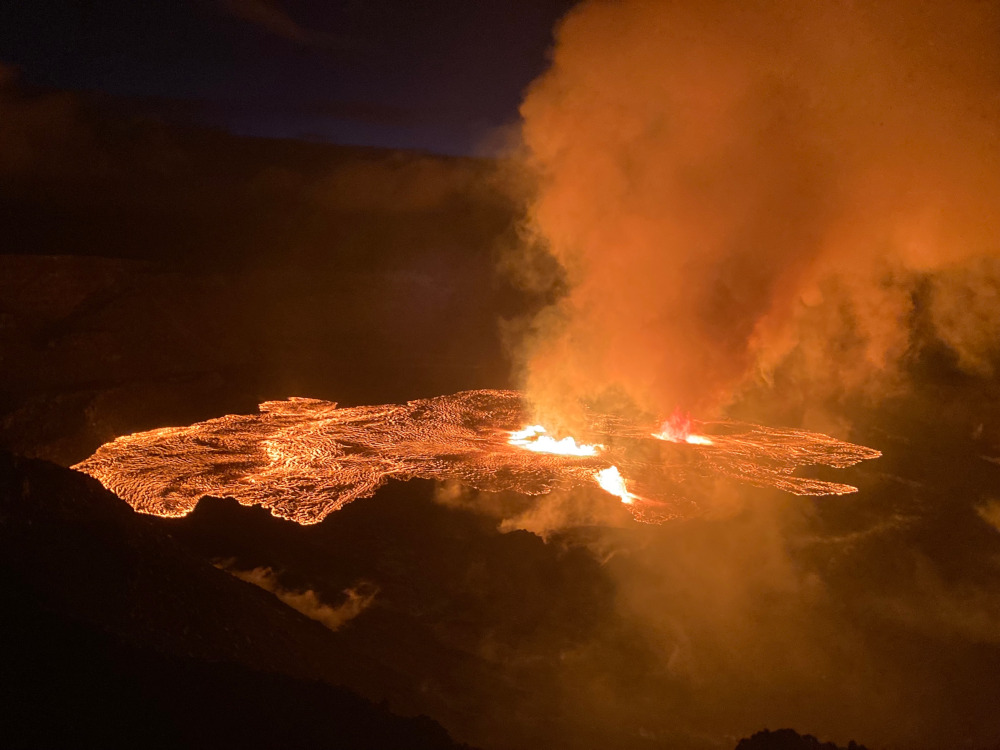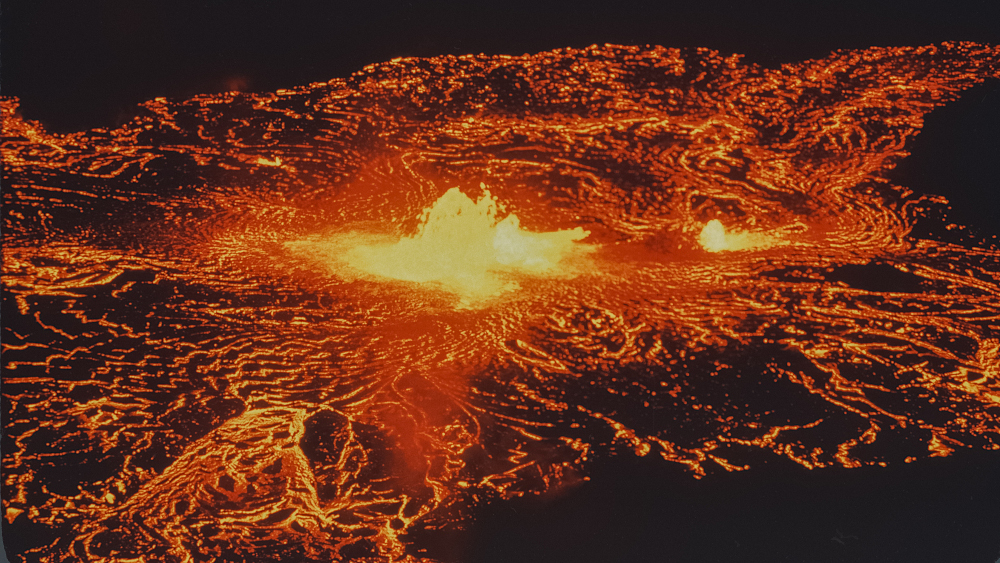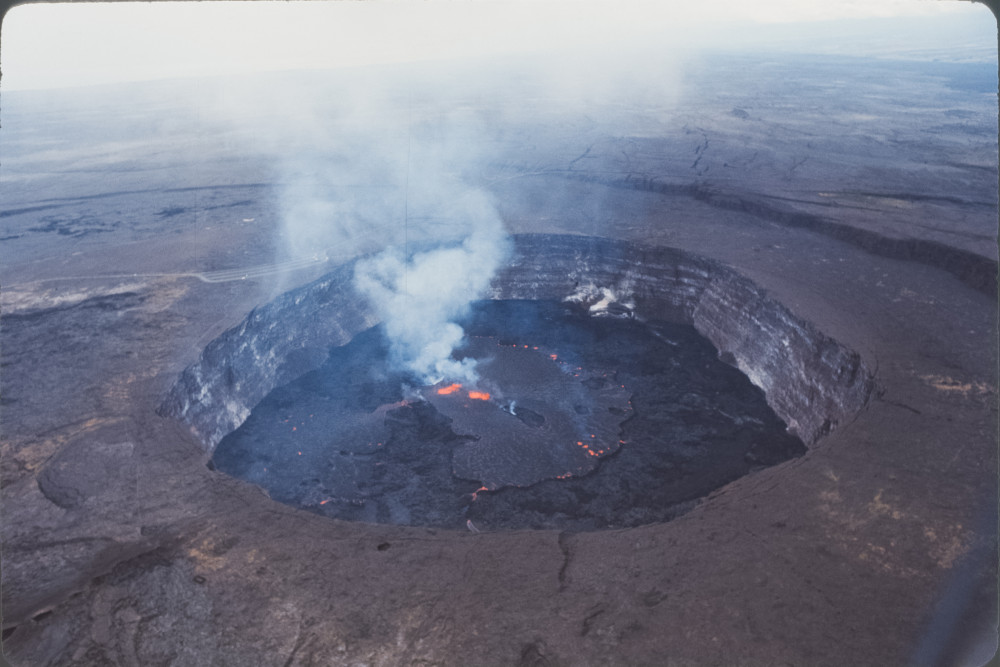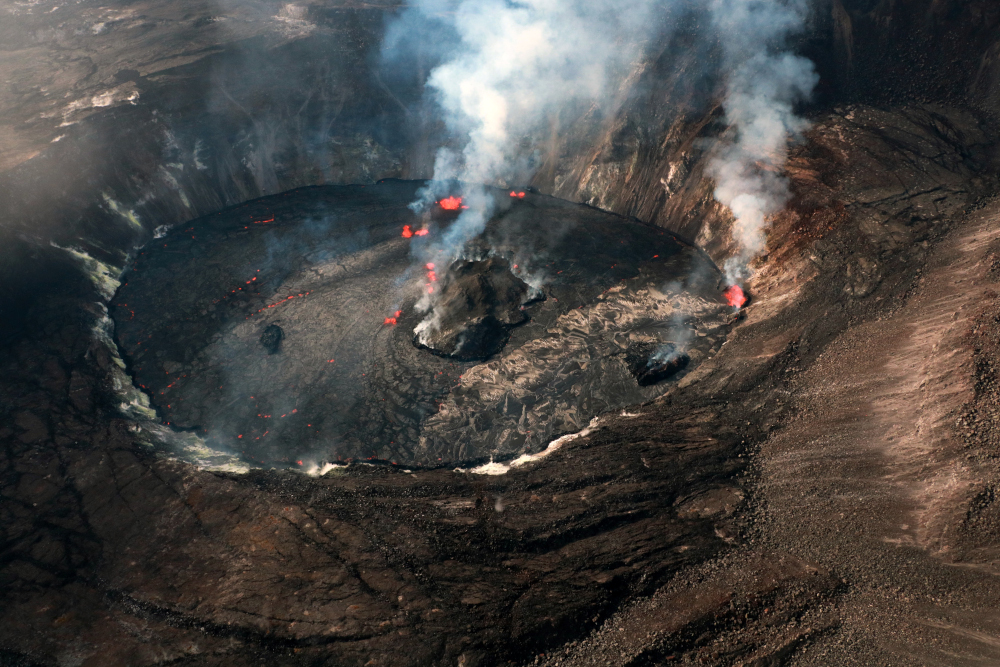
USGS: “A telephoto image of vents erupting on the floor of Halema‘uma‘u crater, at the summit of Kīlauea, in June 2023.” (USGS image)
(BIVN) – Kīlauea is not erupting, and its USGS Volcano Alert level is ADVISORY.
In this week’s Volcano Watch article written by U.S. Geological Survey Hawaiian Volcano Observatory scientists and affiliates, the present Kīlauea summit collapse and refilling cycle is compared with those of the past. From the article:
Kīlauea’s activity from 2018 until now has been compared to cycles of summit collapse and refilling prior to 1924. However, Kīlauea also exhibited similar behavior during the 1967-68 Halema‘uma‘u eruption.
We can learn about how the Hawaiian Volcano Observatory (HVO) monitored Kīlauea prior to and during the 1967-68 Halema‘uma‘u eruption by reading reports documenting activity at that time. HVO staff then wrote, “The current eruption in Halema‘uma‘u is especially interesting because events seem to be following the same general pattern that was recorded again and again during the pre-1924 Kīlauean activity.”
In March and December 1965, middle East Rift Zone eruptions occurred which partially drained the magma storage system at Kīlauea summit and caused modest subsidence. The 2018 lower East Rift Zone eruption of Kīlauea drained the summit magma chamber on a larger scale, resulting in caldera collapse.
Similar timeframes of quiet, non-eruptive periods ensued at the summit of Kīlauea following the 1965 and 2018 eruptions. About two years after each eruption, the summit magma reservoir recharged and eruptions occurred.
HVO staff wrote that the 1967-68 eruption was preceded by only about “one hour of gradually increasing harmonic tremor…though the eruption has been ‘expected’ for over a year.” Gradually increasing earthquake rates and inflation over the months prior signaled to HVO staff that an eruption could be coming.
Likewise, modern HVO has monitored increasing rates of earthquakes and ground deformation for weeks to months prior to the recent eruptions at the summit of Kīlauea. The immediate harbinger of these eruptions has occurred within a similar timeframe of about an hour, as ascending magma breaks rock and causes seismicity.
In 1967, HVO had 12 seismometers and two tiltmeters monitoring Kīlauea’s summit. Though the seismometers were telemetered to the observatory, the tiltmeters were done by hand, being read manually every two-to-twelve hours.
Today, HVO’s Kīlauea summit monitoring network includes similar numbers of seismometers (18) and tiltmeters (4), but it has expanded to include other monitoring datasets. For example, GPS stations record three-dimensional ground motion, gas-stations record volcanic gas emissions and other meteorological data, gravimeters track accumulation and loss of magma beneath the surface, a laser rangefinder tracks elevation of the crater floor, and webcams capture imagery (visual and thermal) documenting changes on the surface and eruptive activity.
Compared to the manual data monitoring of 1967, telemetry advancements and digitization allow HVO scientists to observe near real-time monitoring data remotely. Much of these data are available to the public on the HVO website, including the popular livestream camera.
In their 1967 eruption reports, HVO staff observed that “Halema‘uma‘u is in the process of being filled.” The eruption, which began on November 5, 1967, went on for another 251 days and filled about 370 ft of lava in the crater (113 m). Post-2018 eruptions within Halema‘uma‘u, which began in December 2020, September 2021, January 2023, and June 2023, continued for two weeks to over a year, and have filled the crater over 1,270 feet (387 m) in total.




by Big Island Video News8:49 am
on at
STORY SUMMARY
HAWAIʻI VOLCANOES NATIONAL PARK - Scientists compare Kīlauea’s activity from 2018 until present with the similar behavior observed at Halema‘uma‘u in the past.